Beginnerland
Skill Builder: Mistakes (Part 1)

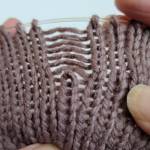
Making mistakes in knitting is a good thing. They’re a way to gain confidence and learn more about the craft.
The most important thing is to know what type of issue you’re dealing with, so you can figure out if you need to fix them, and if so, how.
If your knitting is still on the needles and the whoopsie isn’t far away, you might wish to undo your work. I’ll talk about methods for that in the next column. But if you’re a fair distance past it, or you’ve bound off, you may well just want a spot-fix.
Mistake 1:
A dropped stitch.
This is the classic. I wrote about it in a previous column. This is absolutely something that needs to be fixed, but if you’ve got a crochet hook and a removable stitch marker you’ll be fine!
The trick is to deal with it as soon as you notice it. If you drop a stitch and then keep knitting above it, you’ve effectively made a decrease, and the row is going to close up above it. If this happens, you won’t have enough yarn to use the ‘ravel up with a crochet hook’ trick. See Mistake 5 (below) if you find a dropped stitch after bind-off.
Mistakes 2 and 3:
Sometimes, we need to deliberately drop a stitch, so we can adjust it before raveling it back up again. If you’ve got a purl stitch where there should be a knit (or vice versa), you can drop it down to just below the mistake and then treat it like a dropped stitch.
Just drop this down and pick it back up again.
This method also works for twisted stitches, although if I’m being entirely honest, most of the time I just leave them.
A twisted stitch happens when you knit into the left leg of the stitch, rather than the right. It sometimes happens because the stitch is the wrong way round on the needle. Sometimes this happens because of a goof with needle placement.
Right there in the center, a twisted stitch.
A single twisted stitch isn’t really anything to worry about, as they’re not that easy to see, and it won’t affect your knitting in any great way. (A whole row of twisted stitches is a different kettle of fish, however, and requires actually undoing. That’s for next time.)
Mistake 4:
This is another one that can be fixed with the old ‘drop it down and pick it back up again’ method, but it’s worth highlighting because it’s easy to miss, and might not look that serious: a split stitch.
Doesn’t look like much and can sometimes be hard to spot.
It looks like a bit of fluff or a pill on your fabric, but it’s actually part of your yarn. This happens when your needle tip accidentally splits the yarn as you’re working the stitch, and some of the plies “hang loose.”
Of all of the mistakes, this is the most terrifying. Really! If that little loop gets snagged on something, it can easily break, and then you’re in serious trouble. (This is why, by the way, you’re never supposed to cut pills off your fabric, just in case one of them isn’t actually a pill.)
Again, though, it’s easy to fix once you’ve found it. Just drop the stitch and pick it back up again.
Are you getting the sense that a crochet hook might be useful? It’s why I owned a full collection in all sizes long before I ever made a single granny square.
Mistake 5:
This is a dropped stitch with a difference. I dropped it, and then kept knitting, so that the row above closed up. If you spot a dropped stitch like this in your work, ravel it up as far as you can until the point where the row narrows above it. And then at that point catch the live stitch on a length of yarn, pull it through to the wrong side and weave those ends in.
If you’re picking up a dropped stitch in a bound-off fabric, it’s the same!
Mistake 6:
A similar fix is helpful for this next one: the inadvertent yarnover.
Oh no! A hole!
This happens if your yarn gets caught around a needle tip or the cord of your circular somehow, and on the following row you knit into that like it’s a stitch. This can also happen if you’re doing an M1R or M1L increase and the steps get muddled so that the base of the stitch isn’t twisted as it should be.
The quickest solution is to use a length of yarn to sew the hole closed on the wrong side. Then weave those ends in.
Or, if you prefer, you can drop the stitch down, twist the strand of the new stitch, and then pick it back up again with your crochet hook. This will close up the base somewhat, making it a little less visible.
I suggest you use matching yarn of course, but just use a short length to catch the purl bumps on the wrong side, just around the hole, and pull it closed like a drawstring. Then weave your ends in.
If this was a not-quite-perfect M1R or M1L, your stitch count will be ok and nothing else is needed.
If this was, however, due to a sneaky extra stitch being made, you may well need to adjust your stitch count. Consider working a k2tog, ideally in roughly the same place in the row.
Next time, I’ll talk about what to do if the mistake is more serious. It will all be OK.
Ann and Kay have cooked up a Knit Stars class all about log cabin knitting, a way of knitting that can fill a lifetime of endless fun. Come see what the fuss is about!

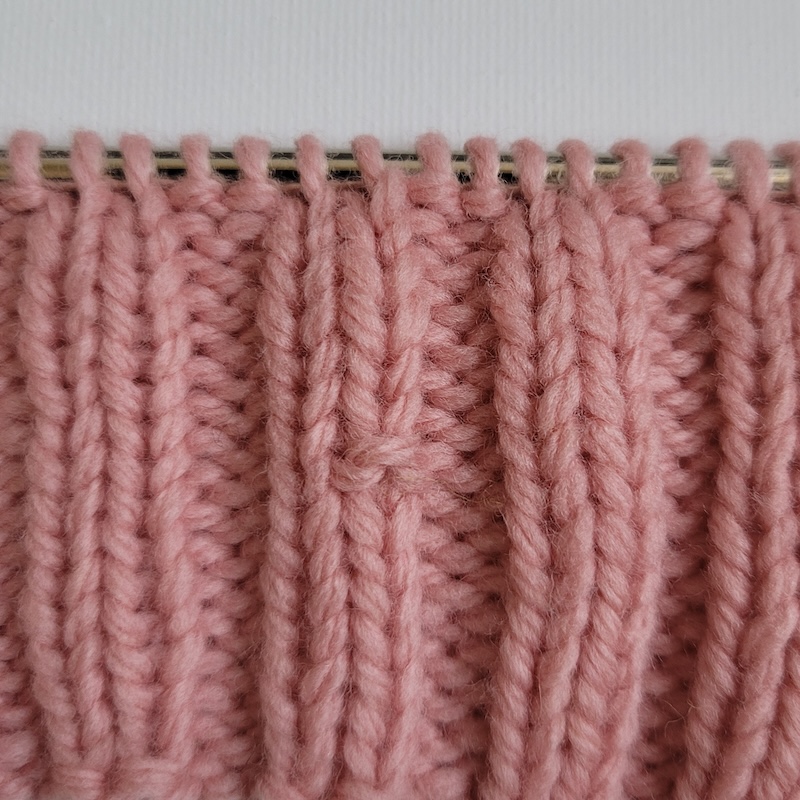
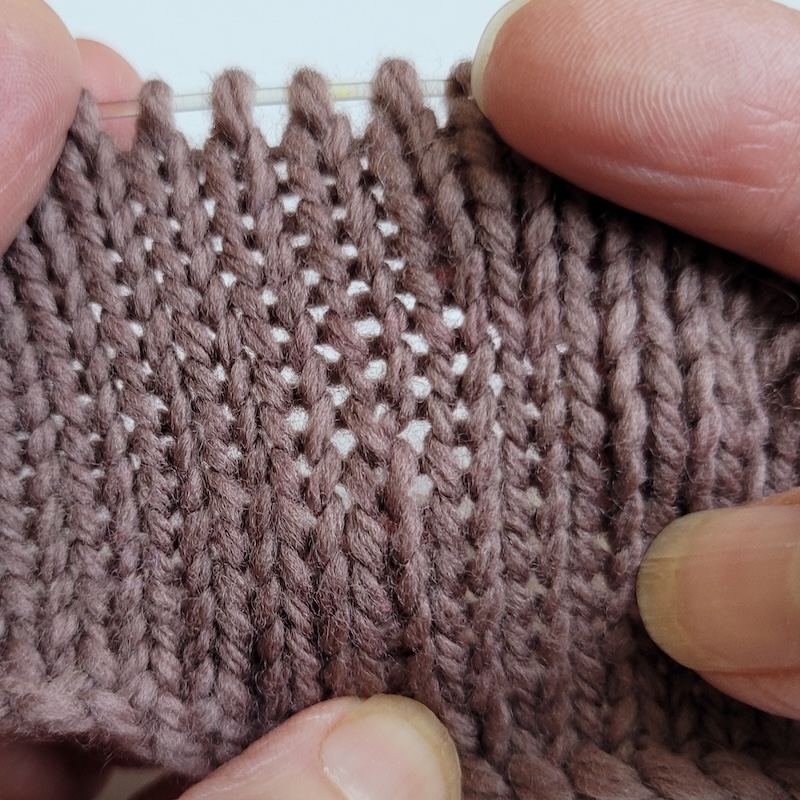
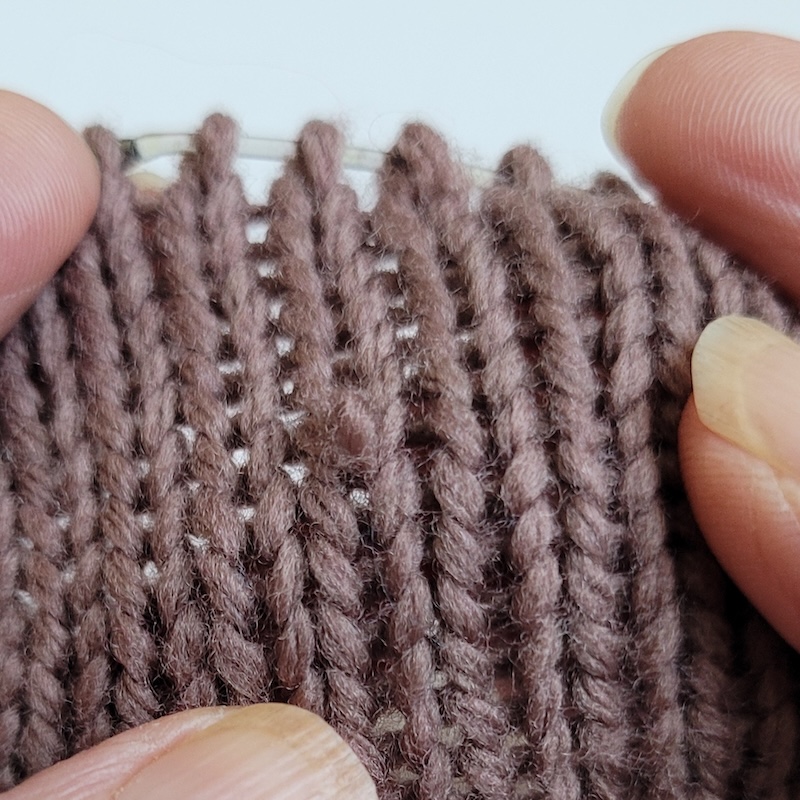
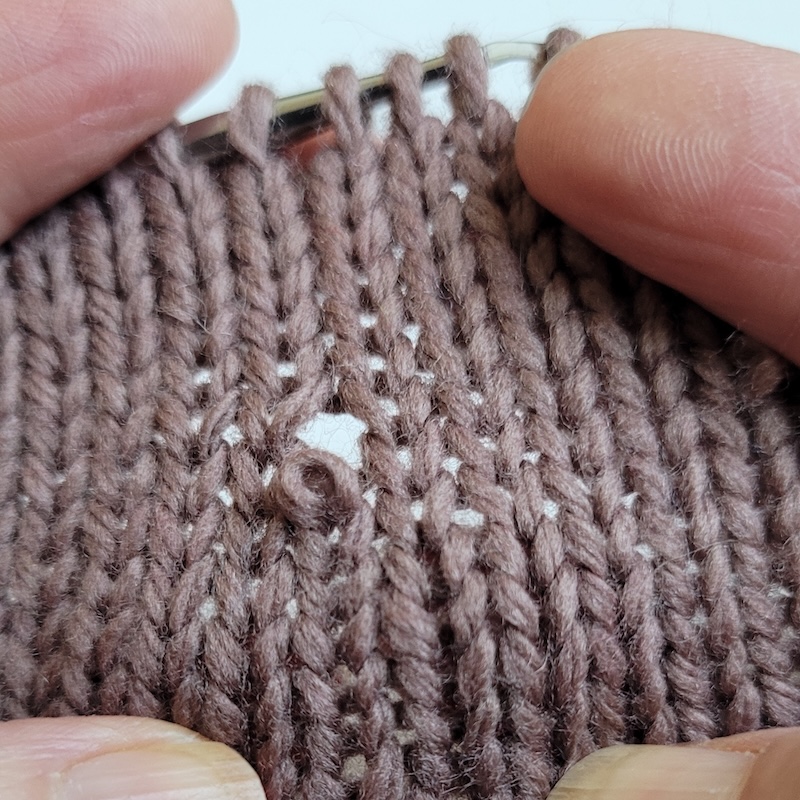
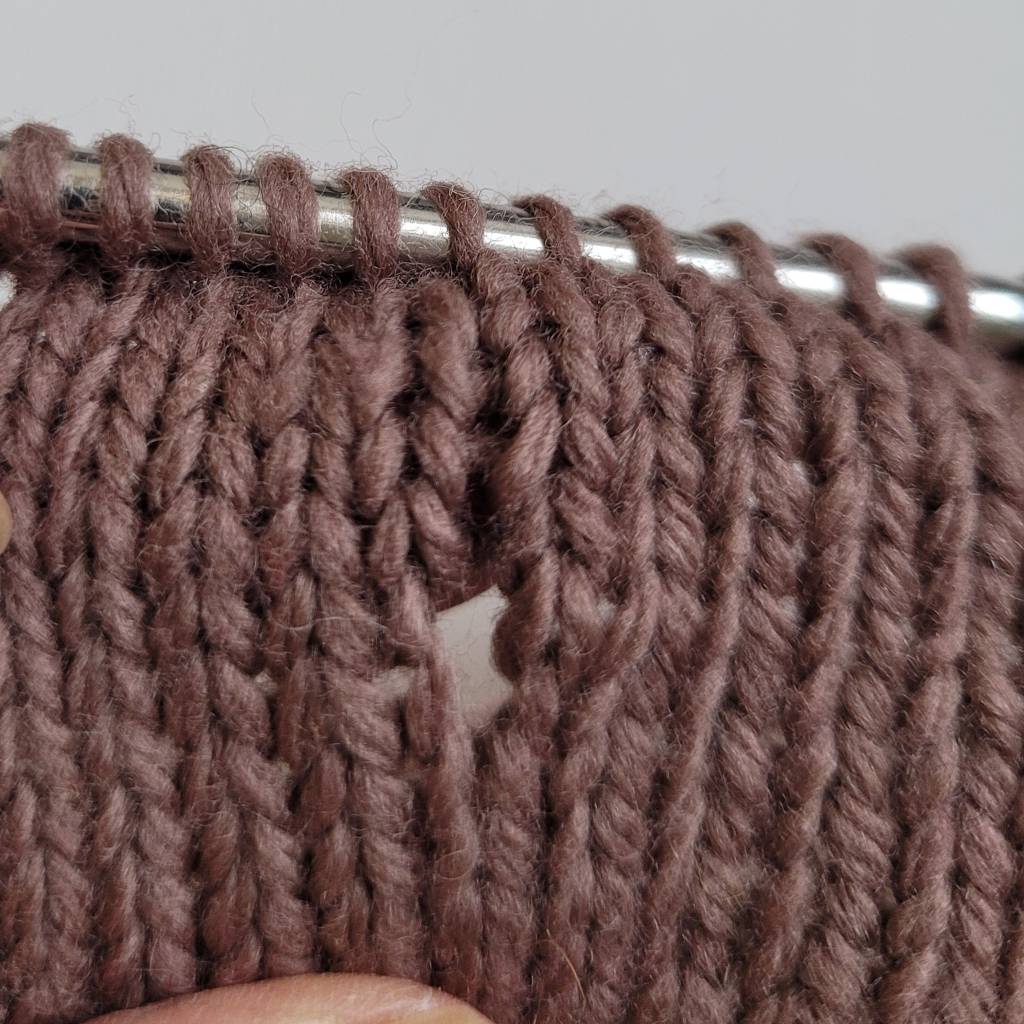
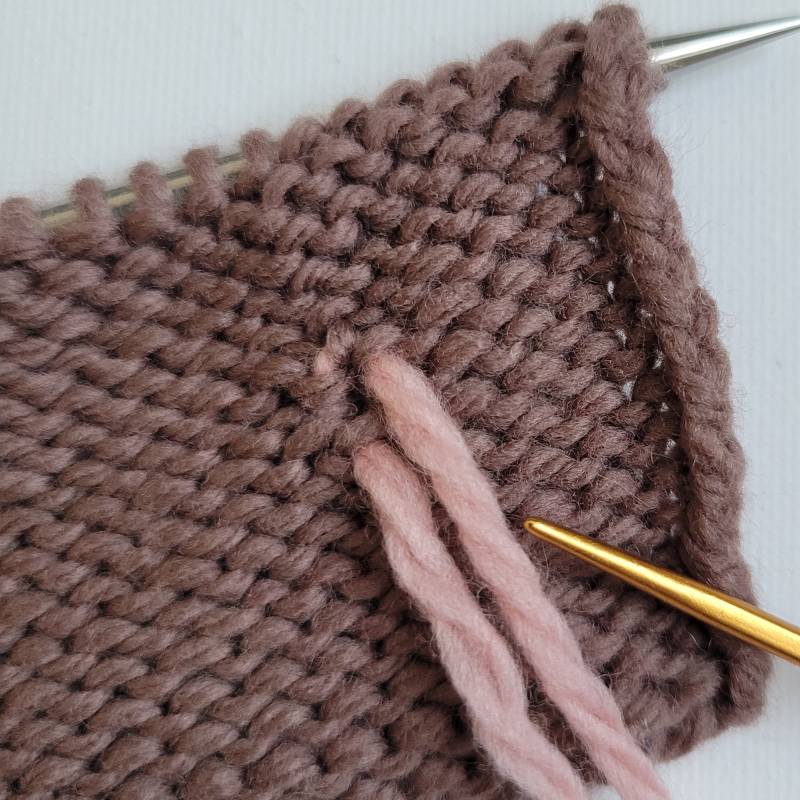

Learning to fix mistakes was really what took my knitting to a “next level” (& here’s hoping that I NEVER stop “leveling up”!!!).I became a Most Valuable Player in the Library Knitting group & was regularly greeted with “Oh YEAY you’re here! I’m stuck & need your help!” So, learning these tricks is a really simple step but really really critical for upping your game!
Thanks Kate for these good diagnostic photos of what to look out for & how to orient your mind going into a repair/frog situation!
I really appreciate your fixing tips. Always good to review the “easier” fixes… looking forward to reading about how to fix more serious mistakes.
Excellent and clear as always!
Thank you Kate – which reminds me I need to pre- order your new book.
I can never fix a dropped stitch in garter without it being ugly and obvious. I’d love a tip for that.
I’ve written about exactly that in another Modern Daily Knitting piece… I don’t think links work in comments, so a quick search will do, or copy and paste this link http://www.moderndailyknitting.com/community/skill-builder-garter-stitch-fixes/
You have to alternate when laddering up garter stitch. Look for videos on YouTube for demos. Watch several because some videos will be better than others. I like Roxanne Richardson for this fix. BTW the goldtone double ended crochet hook she uses is available in a set on Amazon.
Or have a look at my MDK tutorial…
https://www.moderndailyknitting.com/community/skill-builder-garter-stitch-fixes/
Several times over the years I’ve put down my knitting and then when I’ve picked it up I’ve mistakenly started knitting in the opposite direction which creates a hole in the knitting. My only way of fixing this is to pull back to that point. Would just sewing it up work?
Easy enough, but how about this: 5 stitch repeat in the round. It’s a “grain stitch” re:Field Sweater. How to read complicated pattern below and fix.
Hi Donna, that’s a good question.
There’s two answers here: if it’s a really complicated pattern stitch, the simpler (and less stressful) answer might be to undo and rework – more on that next time. But if it’s a single stitch (or even two or three) that’s off, as in the ribbing mistake above, you can absolutely ladder those stitches down to fix them. The more complex the patterning, the more complicated that is, of course, and the law of diminishing returns definitely comes into play… it’s sometimes really is just easier (although perhaps not quicker) to undo and reknit!
Hi Barb,
Yup, as long as it didn’t introduce any other issues, like your ribbing pattern getting misaligned or something, you can absolutely just sew the hole up!
Kate
Thanks Kate!
This was so clearly written. Thank you! This really helps with the mistakes I have made. I thought I was the only one in the world who just tucked in that mistaken slip stitch using a length of yarn, and felt like I was cheating terribly. Thank you for making it OK!
This is wonderful Kate! I am not a daily knitter, but persistent! I have figured things out in past, forgot it, and have to learn again, this article helps.
Have you ever addressed the use of knitting language in Drops Knitting patterns? My current project uses one of their patterns and I am challenged over and over because I am not a daily knitter. Thanks Diane
Diane,
I have talked a little bit about reading patterns, in this column: https://www.moderndailyknitting.com/community/skill-builder-pattern-reading/
I agree that the language in Drops patterns can be a challenge, as they’re often translated into English, and they use non-standard terms. (I was puzzled for a good couple of hours once by a Drops instruction to “leave stitches standing”.) They also assume a fair degree of experience and familiarity with European style instructions – although they can be terrific, they’re not necessarily patterns for beginners.
Kate
Thank you. This made my day.
Excellent advice, Kate. As always. There are so many ways to fix mistakes just as there are so many ways to knit. Love our craft!
Thanks. Looking forward to the rest of this series on Knitting Mistakes and how to fix them.
Thanks for tips …I think I’ve made all of these mistakes. Been working on a shawl and fell asleep. I awoke to a 12 row “kerfuffle diaster”. Ripped all rows out and started over…
Love these fix-up suggestions. I have used some of them.
Thanks,
Kate
good points!
Every time I’m helping a new knitter I made sure we have time to sit quietly together and drop some stitches and then pick them up. It’s so scary but once you’ve done it, it’s a piece of cake. Better to get that fear dealt with early.
Content like this is why I’m a fan — and a customer — of MDK.
Thanks for the advice
Knitting fisherman’s rib and then trying to fix a dropped stitch or stitch that was knitted a knit instead of a knit below, has caused many headaches and complete reknits because it seems the stitches aren’t fix the same way. The tutorials i have watched on YouTube does not seem to help. Any advise please
Hello Lizelle,
This might help? https://www.moderndailyknitting.com/community/brioche-fixing-magic/ Although I come at it from the perspective of brioche, the stitch structure is the same!
Kate
Great advice and so easy to understand. However long you have been knitting “things happen “.
Bet this lady is a great teacher.
Thank you Sylvia
I am Knitting Sweater by Natalie Pelykh And it’s on a graft Suarez stats from the back of the neck down supposed to be all in one piece. I am really confused about how to do the next step. Well I don’t think you can help me so I’m sorry I bothered you. Hope you have a good day Joan.
Thank you for this tutorial
I am an intermediate knitter and have had a problem with a twisted split stitch recently
Knowing I did the right thing with using a separate piece of yarn and weaving it in has now given me confidence to do that again
I just guessed to do this especially as I didn’t notice it until I had cast off my knitting
Kate is a genius! Thanks for all the great tips.
Yup. Have crochet hooks in sizes to deal with the yarn weight(s) you most often knit with, and Don’t Panic!
Thanks for this! I’m confused by #5. If it’s a dropped stitch, doesn’t it need to be picked back up all the way to the top of the knitting (on the needles) to keep the stitch count correct? And how does one “catch the stitch” to pull to the wrong side and weave in?
OCD perfectionist. In cases of mistakes 5 and 6, I wind up undoing the entire thing (in one case, all 28 inches of a skirt) and redoing it. I think the maximum number of number of times I’ve started the same project currently stands at 7. Good thing I like to knit. :-))